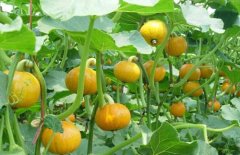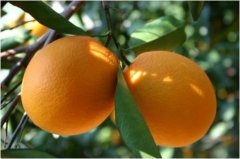The origin of longan: what are the main producing areas of longan cultivation in Taiwan? Classification of maturity of longan varieties
Longan belongs to the disease-free family, is a subtropical evergreen fruit tree, native to Chinese mainland, and has a long history of cultivation in Taiwan. It is recorded in the Chronicles of Zhuo County in 55 years of Emperor Kangxi of the Qing Dynasty. Longan was cultivated when people from Fujian and Guangdong emigrated to Taiwan. Longan cultivated in Taiwan, although introduced from Chinese mainland, has developed into one of the most localized economically cultivated fruit trees in Taiwan because of its wide adaptability, strong fecundity and easy cultivation and management. What is popular now is the method of potted longan planting.
Taiwan is currently the main producing area of longan in the world, except Chinese mainland and Thailand. According to the Annual report of Agricultural Statistics, in 1994, Taiwan's cultivated area was 12358 hectares, with an annual output of 102790 metric tons. The main producing areas are Tainan, Kaohsiung, Taichung, Nantou and Chiayi, while Tainan is the most. The cultivated varieties are mainly "pink shells", accounting for about 60% of the cultivated area.
Longan fruit tree has a wide range of uses, tough material and beautiful texture, which is a good material for furniture and carving products. In addition to fresh food, longan fruit can be baked and processed to produce canned longan, longan wine, longan cream and so on. In recent years, there are so many processed products using longan meat as raw materials in the food industry that the consumption of dried longan meat in Taiwan has increased year by year, which is of great help to relieve the pressure on Taiwan's longan fresh fruit market.
The cultivated varieties of longan in Taiwan are very mixed, and most of them are the natural forest facies of many natural variant plants. In order to facilitate market trading, it has long been divided into four categories: lucky eyes, water eyes, sugar and acid eyes and button eyes only according to the size and quality of the fruit.
Chiayi Agricultural Experimental Branch and Zhongxing University are engaged in variety improvement, verification and screening. So far, more than 70 varieties have been found. Although there are many varieties, the cultivated varieties change quite rapidly, and the more important 8 varieties can be divided into three categories according to the maturity period. they are (1) early maturity (fruit harvested in the first and middle of July): early growth in Takasaki, (2) middle mature species (fruit harvested in late July and late August): pink shell, big pink shell, red shell, green shell, water tribute, (3) late ripening (fruit harvested from September to mid-October): Fanlu late, October.

- Prev

What kinds of pumpkins do you have? Characteristics of Chinese Pumpkin Variety Group Gillian and Ah Cheng
Pumpkin cultivation and management skills: pumpkins are positive vegetables, such as insufficient sunshine, continuous rain, easy to grow and not easy to bear fruit. Pumpkin is more deep ploughing, drought tolerance is quite strong, if too much water or poor drainage in the soil, it is easy to cause overgrowth and fruit drop, so drainage should be selected.
- Next

Where does the orange tree come from? What is the difference between bitter orange and sweet orange? characteristics of navel orange and blood orange
The orange tree was originally grown in China and was planted in Asia for more than 4000 years. Later, it was introduced to Persia, Egypt, Spain and North Africa by Arabs. In fact, orange was transformed by Arabs from Sanskrit nagarunga narandj. Now the oranges are all
Related
- The first cup of black tea in spring, the flavor and history of tea gardens in Kenya, Africa
- The computer can not only choose potatoes, but also grow tea rice. AI will grow winter oolong tea champion.
- It is not only the inflated tea bitten by insects, but also engraved with the four seasons tea in Beipu.
- The Oriental Beauty Tea Festival in Zhuxian County takes the stage at the weekend to experience the plus-size feast of oil tea.
- & quot; Oriental Beauty Tea & Exploration of Emei in Hsinchu, the hometown of quot;
- The new variety of strawberry "Tainong 1" dessert is the first choice with mellow aroma. Crimson gorgeous
- History of Tea in Taiwan: from Wild Inner Mountain to Export Tea Garden
- Two types of Taiwan Oriental Beauty Black Tea won the British three-Star Award for Childhood Tea Xiang Zhang Jiaqi changed from pilot to champion tea maker.
- Banana species and varieties: the planting history of Taiwan Xianren banana and dwarf banana is long, is banana disease resistant?
- Coffee planting Technology: Qianjie Coffee from Seedling to harvesting

